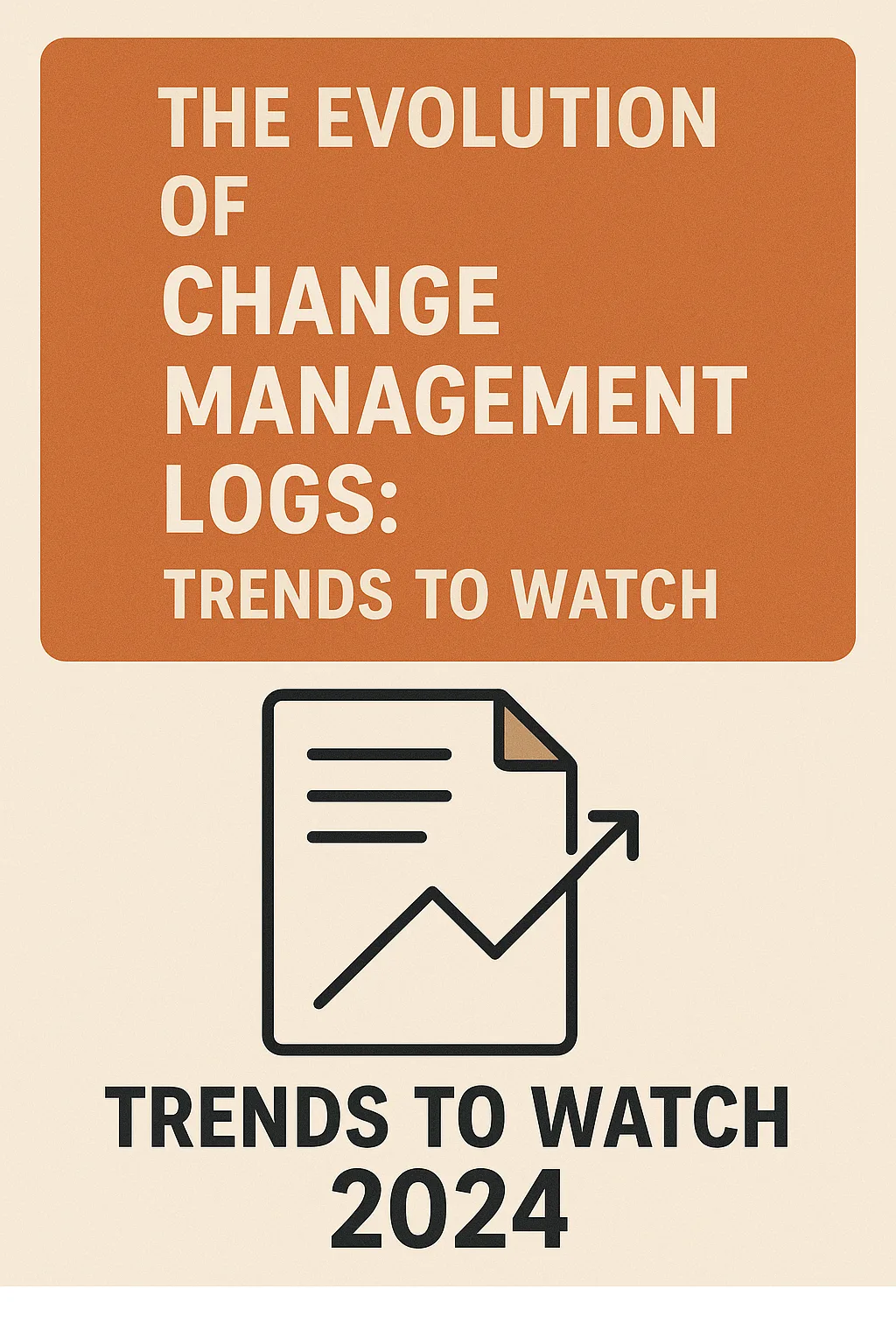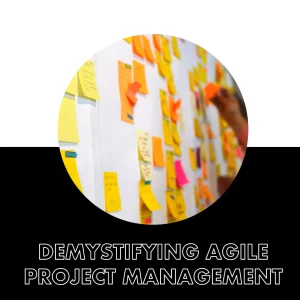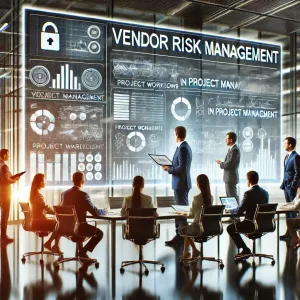Introduction to Change Management Logs
Change management logs are essential tools in project management that serve to document and track changes throughout the lifecycle of a project. These logs provide a structured approach to managing alterations, ensuring that all modifications are recorded, assessed, and communicated effectively. By maintaining a comprehensive change management log, project managers can enhance transparency, accountability, and decision-making processes within their teams.
Definition and Role in Project Management
A change management log is a formal record that captures all requests for changes, the rationale behind them, their impact on the project, and the status of each request. This log plays a critical role in:
- Tracking Changes: It allows project managers to monitor changes systematically, ensuring that no alteration goes unnoticed or unaddressed.
- Facilitating Communication: By documenting changes, the log serves as a communication tool among stakeholders, providing clarity on what changes have been made and why.
- Supporting Decision-Making: The log aids in evaluating the implications of changes, helping project managers make informed decisions about whether to approve or reject change requests.
Historical Perspective on Change Management Documentation
Historically, change management documentation has evolved significantly. In the early days of project management, changes were often recorded informally, leading to inconsistencies and a lack of accountability. As project management methodologies matured, the need for structured documentation became apparent.
- Early Practices: Initially, change requests were noted in meeting minutes or emails, which made tracking difficult and often resulted in miscommunication.
- Advent of Formal Logs: The introduction of formal change management logs marked a turning point, allowing for standardized processes and improved tracking of changes.
- Integration with Technology: With the rise of project management software, change management logs have become more sophisticated, enabling real-time updates and better collaboration among team members.
Importance of Effective Change Tracking and Documentation
Effective change tracking and documentation are crucial for several reasons:
- Risk Management: By documenting changes, project managers can identify potential risks associated with alterations and develop strategies to mitigate them.
- Historical Reference: Change management logs serve as a historical reference for future projects, providing insights into what changes were made, their outcomes, and lessons learned.
- Regulatory Compliance: In many industries, maintaining accurate change logs is not just best practice but a regulatory requirement, ensuring that organizations adhere to standards and guidelines.
As we look towards, the evolution of change management logs will be influenced by emerging trends and technologies, such as the integration of advanced digital tools and methodologies that enhance the efficiency and effectiveness of change management processes. Understanding these trends will be vital for project management professionals and consultants aiming to stay ahead in a rapidly changing landscape.
Current State of Change Management Logs
Change management logs are essential tools in project management, serving as a record of changes made throughout the project lifecycle. As we move forward change management logs is evolving, influenced by emerging trends and technologies. Here’s an analysis of the current state of change management logs, focusing on common tools and methodologies, challenges faced by project managers, and the contrast between traditional and modern approaches.
Common Tools and Methodologies Currently Used
- Documentation Software: Many project managers rely on traditional documentation tools such as Microsoft Word or Excel for maintaining change logs. However, these tools often lack the collaborative features needed for dynamic project environments.
- Project Management Software: Platforms like Jira, Trello, and Asana are increasingly being utilized for change management. These tools offer integrated features that allow teams to track changes in real-time, assign responsibilities, and monitor progress.
- Change Management Frameworks: Methodologies such as ADKAR (Awareness, Desire, Knowledge, Ability, Reinforcement) and Agile frameworks are being adopted to enhance the flexibility and responsiveness of change management processes. These frameworks help in structuring change management logs to align with project goals and stakeholder needs [1][7].
Challenges Faced by Project Managers in Documenting Changes
- Inconsistency in Documentation: One of the primary challenges is maintaining consistency in how changes are documented. Different team members may have varying interpretations of what constitutes a change, leading to discrepancies in the logs.
- Resistance to Change: Project managers often encounter resistance from team members who may be reluctant to adopt new tools or processes for documenting changes. This resistance can hinder the effectiveness of change management practices [2][8].
- Time Constraints: The fast-paced nature of project management can make it difficult for teams to dedicate sufficient time to accurately document changes. This often results in incomplete or rushed entries in change management logs, which can compromise the integrity of the documentation [3][9].
Overview of Traditional vs. Modern Approaches to Change Management Logs
- Traditional Approaches: Historically, change management logs were maintained as static documents, often updated manually. This approach can lead to outdated information and a lack of real-time visibility into changes. Traditional methods typically involve a linear process where changes are recorded after they occur, which can delay response times and hinder project agility [4][11].
- Modern Approaches: In contrast, modern change management logs leverage technology to provide dynamic, real-time updates. Tools that integrate with project management software allow for automatic logging of changes, ensuring that all team members have access to the most current information. This shift towards automation and integration not only enhances accuracy but also improves collaboration among team members [5][12][14].
The evolution of change management logs will continue to be shaped by advancements in technology and methodologies. Project management professionals and consultants must stay informed about these trends to effectively navigate the complexities of change management in their projects.
Emerging Trends in Change Management Logs
Change management is evolving rapidly, influenced by technological advancements and shifting methodologies. For project management professionals and consultants, understanding these trends is crucial for effective documentation and management of change. Here are some key trends that are likely to impact change management logs in the coming year:
- Increased Integration of AI and Machine Learning: The incorporation of artificial intelligence (AI) and machine learning into change management practices is set to revolutionize how organizations document and manage change. These technologies can automate data entry, analyze patterns in change requests, and predict potential impacts of changes, thereby enhancing the accuracy and efficiency of change management logs. This shift not only streamlines processes but also allows project managers to focus on strategic decision-making rather than administrative tasks [1][10].
- Shift Towards Agile Methodologies: The adoption of agile methodologies is influencing change documentation significantly. Agile practices emphasize flexibility and responsiveness, which necessitates a more dynamic approach to change management logs. Instead of static documents, organizations are moving towards iterative logs that can be updated in real-time, reflecting ongoing changes and adjustments. This trend encourages collaboration among team members and stakeholders, ensuring that everyone is aligned and informed about the latest developments [2][11].
- Growing Emphasis on Real-Time Data Tracking and Analytics: there will be a heightened focus on real-time data tracking and analytics within change management logs. Organizations are increasingly recognizing the value of immediate insights into the impact of changes on project outcomes. By leveraging advanced analytics tools, project managers can monitor the effectiveness of changes as they occur, allowing for timely adjustments and informed decision-making. This trend not only enhances accountability but also supports a culture of continuous improvement within project teams [3][12].
The evolution of change management logs will be characterized by the integration of advanced technologies, a shift towards agile practices, and a focus on real-time data analytics. Project management professionals must stay abreast of these trends to effectively navigate the complexities of change and ensure successful project outcomes. Embracing these changes will not only improve documentation practices but also enhance overall project management effectiveness in an increasingly dynamic business environment.
Technological Innovations Shaping Change Management Logs
As we look towards, change management logs is undergoing significant transformation, driven by technological advancements. Project management professionals and consultants must stay informed about these emerging trends to enhance their documentation practices. Here are some key innovations that are shaping the future of change management logs:
- Cloud-Based Solutions: The adoption of cloud technology is revolutionizing how change management logs are created and maintained. These solutions enhance accessibility, allowing team members to access and update logs from anywhere, at any time. This flexibility fosters collaboration among distributed teams, ensuring that all stakeholders are on the same page regarding changes and their impacts. The ability to store and manage documentation in the cloud also streamlines the process of tracking changes over time, making it easier to reference historical data and decisions made during the project lifecycle [1][12].
- Blockchain Technology: The integration of blockchain technology into change management practices is gaining traction due to its potential for enhancing transparency and security. By utilizing blockchain, organizations can create immutable records of changes, ensuring that all modifications are securely documented and traceable. This level of transparency not only builds trust among stakeholders but also aids in compliance with regulatory requirements. The decentralized nature of blockchain can also reduce the risk of data tampering, providing a reliable audit trail for all change management activities [2][11].
- Mobile Applications: The emergence of mobile applications is transforming how change documentation is conducted, allowing project managers and team members to document changes on-the-go. These applications enable users to capture updates, comments, and approvals directly from their mobile devices, facilitating real-time documentation. This immediacy helps to reduce the lag often associated with traditional logging methods, ensuring that changes are recorded promptly and accurately. As remote work continues to be a norm, mobile solutions will play a crucial role in maintaining effective change management practices [3][10].
The evolution of change management logs is heavily influenced by technological innovations such as cloud-based solutions, blockchain technology, and mobile applications. These advancements not only enhance the efficiency and security of change documentation but also promote greater collaboration among project teams. As these trends continue to develop, project management professionals must adapt their practices to leverage these technologies effectively.
Best Practices for Implementing Change Management Logs
As project management continues to evolve, the importance of effective change management logs cannot be overstated. These logs serve as critical documentation tools that help track changes, assess their impacts, and ensure that all stakeholders are informed. Here are some actionable strategies for project management professionals to enhance their change management documentation:
- Establishing a Standardized Format for Change Logs:
Creating a uniform template for change logs is essential for consistency and clarity. A standardized format should capture key details such as the description of the change, reasons for the change, potential benefits, estimated costs, and impact assessments. This approach not only streamlines the documentation process but also facilitates easier review and approval by project managers and stakeholders [1][5]. - Training Teams on the Importance of Change Management Practices:
Educating team members about the significance of change management is crucial for fostering a proactive approach to documentation. Training sessions can cover the objectives of change management, the role of change logs, and best practices for maintaining them. By ensuring that all team members understand the value of thorough documentation, organizations can improve compliance and reduce the likelihood of errors or oversights [3][10]. - Encouraging a Culture of Communication and Collaboration Regarding Changes:
Promoting open communication about changes is vital for effective change management. Teams should be encouraged to discuss potential changes early in the process, allowing for collaborative input and feedback. This culture of transparency not only enhances the quality of change logs but also helps in identifying potential risks and impacts before they escalate [3][11]. Regular meetings and updates can be instrumental in keeping everyone aligned and informed about ongoing changes.
By implementing these best practices, project management professionals can significantly improve their change management logs, ensuring that they are not only comprehensive but also adaptable to project management. Embracing these strategies will lead to better project outcomes and a more resilient approach to managing change.
Successful Change Management Log Implementations
The implementation of effective change management logs has become increasingly vital. As organizations strive to adapt to new technologies and methodologies, several companies have successfully adopted innovative practices in their change management documentation. Here, we explore real-world examples that highlight the benefits and lessons learned from these implementations.
1. TechCorp Innovations
Overview: TechCorp, a leading software development firm, integrated an automated change management log system that utilized AI and data analytics. This system allowed for real-time tracking of changes and their impacts on ongoing projects.
Key Outcomes:
– Increased Efficiency: The automation reduced the time spent on manual logging by 40%, allowing project managers to focus on strategic tasks.
– Enhanced Visibility: Stakeholders gained immediate access to change logs, improving communication and decision-making processes.
Lessons Learned:
– Invest in Training: Ensuring that all team members are trained on the new system was crucial for maximizing its potential.
– Iterative Feedback: Regular feedback loops helped refine the system, making it more user-friendly and effective.
2. Global Manufacturing Solutions
Overview: This multinational manufacturing company adopted a hybrid approach to change management logs, combining traditional documentation with digital tools like cloud-based platforms.
Key Outcomes:
– Improved Collaboration: Teams across different locations could access and update change logs in real-time, fostering collaboration and reducing delays.
– Data-Driven Decisions: The integration of analytics allowed the company to assess the impact of changes on production timelines and costs, leading to more informed decision-making.
Lessons Learned:
– Customization is Key: Tailoring the change management log to fit the specific needs of different departments enhanced its usability.
– Regular Audits: Conducting periodic audits of the change logs ensured compliance and identified areas for improvement.
3. Healthcare Innovations Inc.
Overview: In the healthcare sector, this organization implemented a change management log that incorporated Virtual Reality (VR) simulations to visualize changes in processes and protocols.
Key Outcomes:
– Enhanced Training: The use of VR for training staff on new procedures resulted in a 30% reduction in onboarding time.
– Increased Engagement: Employees reported higher engagement levels when interacting with the change management log through immersive technologies.
Lessons Learned:
– Embrace New Technologies: Being open to innovative solutions can significantly enhance the effectiveness of change management practices.
– Stakeholder Involvement: Involving end-users in the development of the change management log ensured that it met their needs and expectations.
Recommendations for Other Organizations
- Leverage Technology: Embrace emerging technologies such as AI, cloud platforms, and VR to enhance change management logs.
- Focus on Training and Support: Provide comprehensive training and ongoing support to ensure that all team members can effectively utilize the change management log.
- Encourage Feedback: Create a culture of continuous improvement by encouraging feedback from users to refine and enhance the change management process.
Project management professionals and consultants can glean valuable insights into the successful implementation of change management logs. The lessons learned from these organizations can serve as a roadmap for others looking to enhance their change management practices.
Conclusion and Future Outlook
As we look towards, change management logs is poised for significant transformation, driven by emerging trends and technologies. The integration of advanced tools and methodologies is not just a trend but a necessity for project management professionals aiming to navigate the complexities of modern projects effectively. Here are some key takeaways and a forward-looking perspective on the evolution of change management logs:
- Adapting to Emerging Trends: The importance of staying attuned to the latest trends in change management cannot be overstated. With the rise of technologies such as Virtual Reality (VR) and Augmented Reality (AR), organizations are increasingly investing in immersive solutions that enhance the change experience for employees. This shift necessitates a reevaluation of how change management logs are documented and utilized, ensuring they reflect the dynamic nature of these technologies and their impact on project outcomes [1][11].
- Staying Informed and Agile: Project management professionals must cultivate a mindset of agility and continuous learning. As generative AI and automation become more prevalent, the ability to adapt change management logs to incorporate these innovations will be crucial. This adaptability will not only streamline processes but also enhance the accuracy and relevance of documentation, ultimately leading to more successful project implementations [2][3][12].
- Future Evolution: Looking ahead, the evolution of change management logs will likely encompass a broader range of digital tools and methodologies. The integration of data analytics and AI-driven insights will enable project managers to make more informed decisions based on real-time data. Furthermore, as organizations increasingly embrace agile principles, change management logs will need to reflect iterative processes and foster collaboration across teams [4][10][15].
The future of change management logs is bright, characterized by innovation and adaptability. By embracing these emerging trends and technologies, project management professionals can enhance their documentation practices, ensuring they are well-equipped to manage change effectively in an ever-evolving landscape. The journey towards a more integrated and responsive approach to change management is just beginning, and staying proactive will be key to success in the years to come.
Find out more about Shaun Stoltz https://www.shaunstoltz.com/about/.
This post was written by an AI and reviewed/edited by a human.



